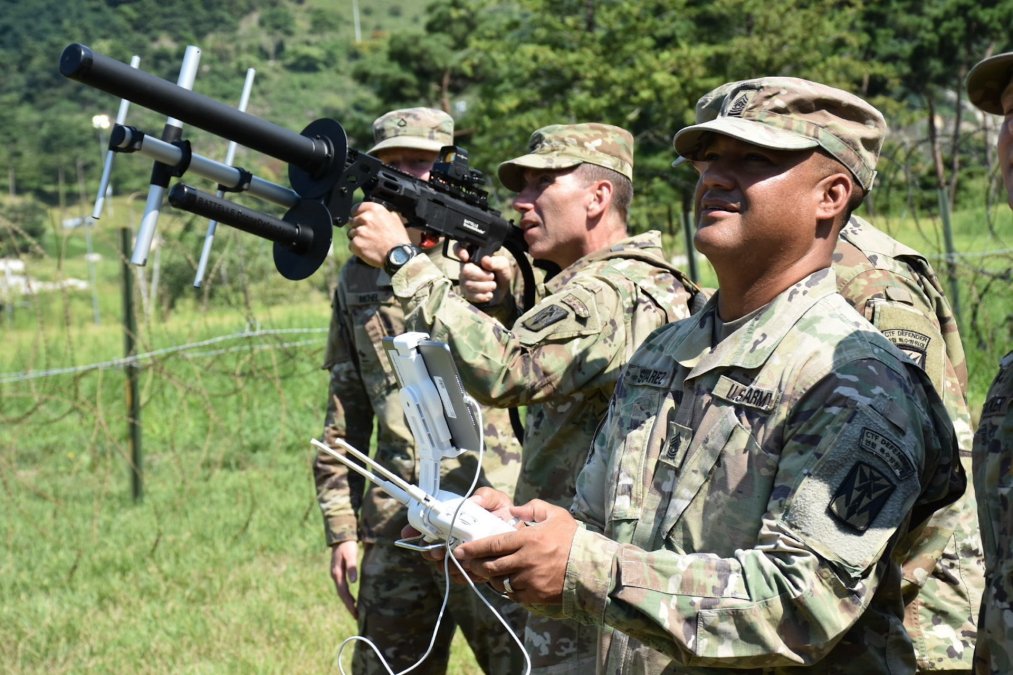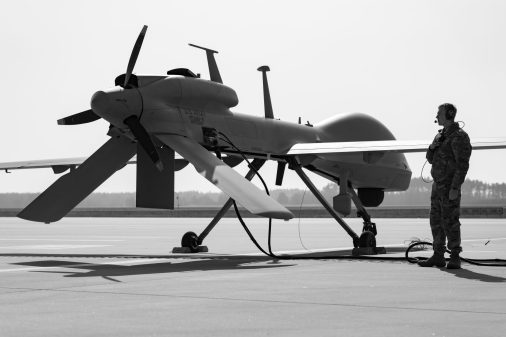Senior Army leader throws cold water on lawmakers’ Drone Corps proposal

Key lawmakers are proposing that the Army establish a Drone Corps as a basic branch of the force, but at least one service leader isn’t keen on the idea.
Earlier this week, the House Armed Services Subcommittee on Tactical Air and Land Forces released draft language for the fiscal 2025 Servicemember Quality of Life Improvement and National Defense Authorization Act. A provision would mandate the creation of a Drone Corps that would be given primary responsibility for programs, projects and activities involving small and medium unmanned aerial systems and counter-UAS weapons.
The organization would be tasked to serve as a “command center” for Army operations involving these types of systems; help integrate the systems with forces that have not traditionally used such platforms; conduct research, development, testing and evaluation of technologies; and provide personnel with specialized training.
Additionally, it would be directed to carry out programs to attract and retain personnel with relevant expertise, develop strategies and capabilities to counter drones, and “perform such other functions relating to unmanned aircraft and unmanned aircraft systems as the Secretary determines appropriate,” according to the draft legislation.
The secretary of the Army would be responsible for appointing the chief of the Drone Corps.
Army leaders are keen on modernizing the service’s UAS and counter-UAS capabilities as they look to introduce next-generation platforms into the force and address growing threats.
“I did see the language in the initial draft of the House bill. And I would say that it’s animated, I think, by a recognition that you know this is a very real threat. It is a problem that the Department [of Defense] and the Army in particular have to confront. And so we … share that urgency and we definitely share that focus,” Army Undersecretary Gabe Camarillo said Friday during an event hosted by the Center for a New American Security.
However, standing up a new drone branch like the one being proposed, wouldn’t be the best way to address the problem and might be counterproductive, he suggested.
“My view is that, you know, creating a corps or other institutional kind of structures to kind of get after it, in some way could take away some focus from some of the things that … we’re actually doing. It’s important in my view to get after giving units, you know, these [commercial off-the-shelf] UAS capabilities to let them experiment. I want to better understand the TTPs [tactics, techniques and procedures] about how they’re going to employ them at different echelons and to be able to understand, you know, how that affects the way that our formations will fight,” he said.
Camarillo noted that the Army is pursuing a concept called “transforming in contact,” which aims to use unit rotations to help determine what technologies and configurations its forces will need, including UAS and counter-UAS tools.
Chief of Staff Gen. Randy George is a strong proponent of the effort and has highlighted the need for the service to boost its prowess in these areas.
“One of the things we’re doing is experimenting with some of our brigades right now to kind of give them not only these launched effects and COTS UAVs, but to allow them to kind of figure out and train how they would use them … And really what it is it’s taking three brigades that are deploying or going to large-scale exercises, and giving them these types of kit so they have an opportunity to figure out how would they employ them. It will give us a tremendous amount of feedback,” Camarillo said.
These initiatives and others that the Army is pursuing, are more likely to yield benefits from an operational and acquisition perspective than creating a Drone Corps, he suggested.
“Things that we’re doing, like transformation in contact or some of the experiments that we’re performing today are critically important. I think the institutional implications of it to me are secondary at this point, as opposed to figuring out how we’re going to employ the technology, what technology works the best, and most importantly, do we have our buying processes in place in order to be able to get there,” Camarillo said. “Having a branch or, you know, a [Center of Excellence] or anything like that — it’s not going to help us buy anything faster or get us more resources against this problem set.”






